












Bennion Deville Homes and Coachella Valley Rescue Mission (CVRM) are once again teaming up to provide new toys to children across the desert for the holidays. From now until Friday, December 9th, Bennion Deville Homes offices throughout the Coachella Valley are accepting donations of new, unwrapped toys and gift cards. CVRM anticipates a critical shortage of toys for local children this year, and Bennion Deville Homes wants to ensure that need is met.
Last year, CVRM distributed toys to 6,000 children, and expects to match or even exceed that figure again due to ongoing economic hardship. Items for children ages 5 to 12 are especially of need during the holiday season.
Suggested new, unwrapped toys include:
• Sports equipment, such as baseballs, softballs, footballs, and soccer balls
• Barbies and Barbie clothing
• Dolls & action fi gures
• Beauty products, such as makeup and curling irons
• Educational toys

• Games & puzzles
• Arts & crafts
• Skateboards, scooters, and bikes
• Ride-on vehicles
Bennion Deville Homes offices accepting donations include:
Palm Springs: 201 N. Palm Canyon Drive, Suite 120, Palm Springs
Rancho Mirage: 71691 Highway 111, Rancho Mirage
Palm Desert: 44-530 San Pablo Avenue, Suite 101, Palm Desert
Indian Wells: 74-910 Highway 111, Indian Wells
La Quinta: 47-350 Washington Street, Suite 101, La Quinta
States Bennion Deville Homes C.E.O. Bob Deville, “We are honored to work with the Coachella Valley Rescue Mission again this year. Our holiday toy drives always bring an outpouring of generosity from our agents, clients, and staff. It brightens our spirits to know that giving new, unwrapped toys to the CVRM toy drive will light up a local child’s face this holiday season. The mission that CVRM fulfills across our region is admirable and inspiring, and we are always eager to do our part to help them succeed. We encourage our agents, staff, and clients to contribute anything they can, especially this year
when CVRM expects to provide toys to more local families than usual. Let’s meet our collective goal of ensuring everyone has a joyous holiday season in our desert communities. Thank you for your support and generosity toward this cause.”
As a leader in the local community, and the desert real estate leader, Bennion Deville Homes strives to make the neighborhoods it serves a better place for all. Founded in 2001 by Bob Bennion and Bob Deville, Bennion Deville Homes serves home buyers and sellers throughout Southern California in the primary markets of the Greater Palm Springs Area (Coachella Valley) and the mountain communities of Riverside County. Bennion Deville Homes, the #1 real estate brokerage in the Coachella Valley, is a wholly owned subsidiary of HomeServices of America, a Berkshire Hathaway affiliate. HomeServices is the nation’s largest real estate company based on closed transactions, strengthening Bennion Deville Homes’ standing as a top brokerage on the local, regional, and national stages.
For the location of the Bennion Deville Homes office nearest you, visit our website, BDHomes.com. Follow us on major social media platforms @BDHSoCal for the latest local and national real estate and lifestyle news. We will unlock possibilities for you.
DRE# 01325548 760.341.4141





















PALM SPRINGS
2BD/2BA Mission Hills Country Club 426 Forest Hills Drive $540,000 Christina Cook 760-219-0021 Sun 12-3
$537,900 Randy Heyl 310-497-7983 Sat/Sun 11-2
3BD/3BA Palm Springs 2381 Quincy Way $949,500 John J. Walker 310-200-5220 Sat/Sun 1-3



3BD/3BA Movie Colony 550 North Indian Canyon Drive $1,387,000 Steven Amador 310-867-3528 Sat 11-2



3BD/3BA Murano 1126 Lucent Court $1,439,500 Barbara Saint Clair 760-699-3026 Sat 11-1/Sun 12-2


3BD/2BA Mission Shores 128 Shoreline Drive $659,000 Pat Richter 760-902-1774 Sat 11:30-2:30
22BD/3BA Del Webb Rancho Mirage 13 Moscato $1,044,000 Mark Pariser 760-413-6595 Sat 11-1/Sun 11-2





3BD/3BA Mirage Cove 23 Alta Vista

$1,435,000 Marilyn Bauer 760-333-6303 Sun 11-2 3BD/3BA The Springs Country Club 51 Dartmouth Drive $1,435,000 Denise Chlouber 760-774-7003 Sat 12-3/Sun 1-3
Mission



Hills Country Club, Rancho Mirage 426


3BD/4BA Los Altos 71042 Los Altos Court $1,495,000 Cass Graff-Radford 760-275-7436 Sat 1-3

• PALM DESERT •


4BD/3BA Sun City Palm Desert 78149 Kistler $715,000 Gayle Pietras 760-636-8527 Sat/Sun 12:30-3
3BD/2.5BA Sun City Palm Desert 34743 Blake Drive $849,000 Gayle Pietras 760-636-8527 Sun 12-2:30


4BD/4BA Desert Mirage 38751 Desert Mirage Drive $899,000 DW & Associates 760-776-7070 Sat 10-12
3BD/3.5BA Indian Ridge 383 Desert Holly Drive $975,000 DW & Associates 760-776-7070 Sat 1-3
4BD/4.5BA Indian Ridge 292 White Horse Trail $1,695,000 DW & Associates 760-776-7070 Sat/Sun 1-3
3BD/3.5BA Indian Ridge 870 Deer Haven Circle $1,699,000 DW & Associates 760-776-7070 Sat/Sun 1-3
3BD/3.5BA Indian Ridge 367 Tomahawk Drive $1,699,000 DW & Associates 760-776-7070 Sat/Sun 1-3
• LA QUINTA •
2BD/2BA Trilogy La Quinta 81761 Ulrich Drive $629,000 Abigail Miller 760-238-6402 Sun 12-3
2BD/2BA Trilogy La Quinta 61655 Toro Canyon Way $639,000 Mark Miller 442-234-3325 Sun 12-3
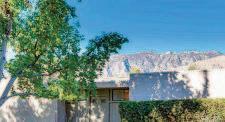
3BD/3BA Trilogy La Quinta 81434 Joshua Tree Court $689,000 Lynn Killoran 760-567-7567 Sun 12-3
OPEN: Sat/Sun 1:00pm-4:00pm Canyon South, Palm Springs 1800 S. La Paloma • $775,000 • 2BD/2BA • Impeccably renovated Jeffery Burnell • 760-902-8227 OPEN: Sat/Sun 12:00pm-3:00pm Desert Park Estates , Palm Springs 2899 E. San Juan Road • $999,000 • 3BD/2BA • Pool, Hugh Kaptur, AIA Sat: Chris Griffin 767-812-0271 • Sun: Dan Flogel 760-898-2291 OPEN: Sat 11:00am-1:00pm/Sun 1:00pm-3:00pm Escena, Palm Springs 4122 Ebony Lane • $1,150,000 • 2BD/3BA • 1964 SF • Upgraded David Passarell • 760-668-1499 • RANCHO MIRAGE • BD/1BA Blue Skies 70260 Highway 111 #55 $179,000 John K. Miller 760-771-7538 Sat/Sun 10-1 OPEN: Sat 12:00pm-3:00pm/Sun 1:00pm-3:00pm The Springs Country Club, Rancho Mirage 51 Dartmouth Drive • $1,435,000 • 3BD/3BA • Price Reduction Sat: Denise Chlouber 760-774-7003 • Sun: Brendan Rome 323-868-7890
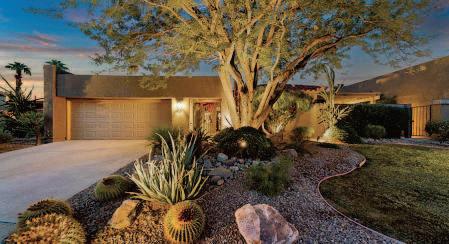













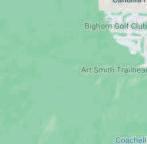












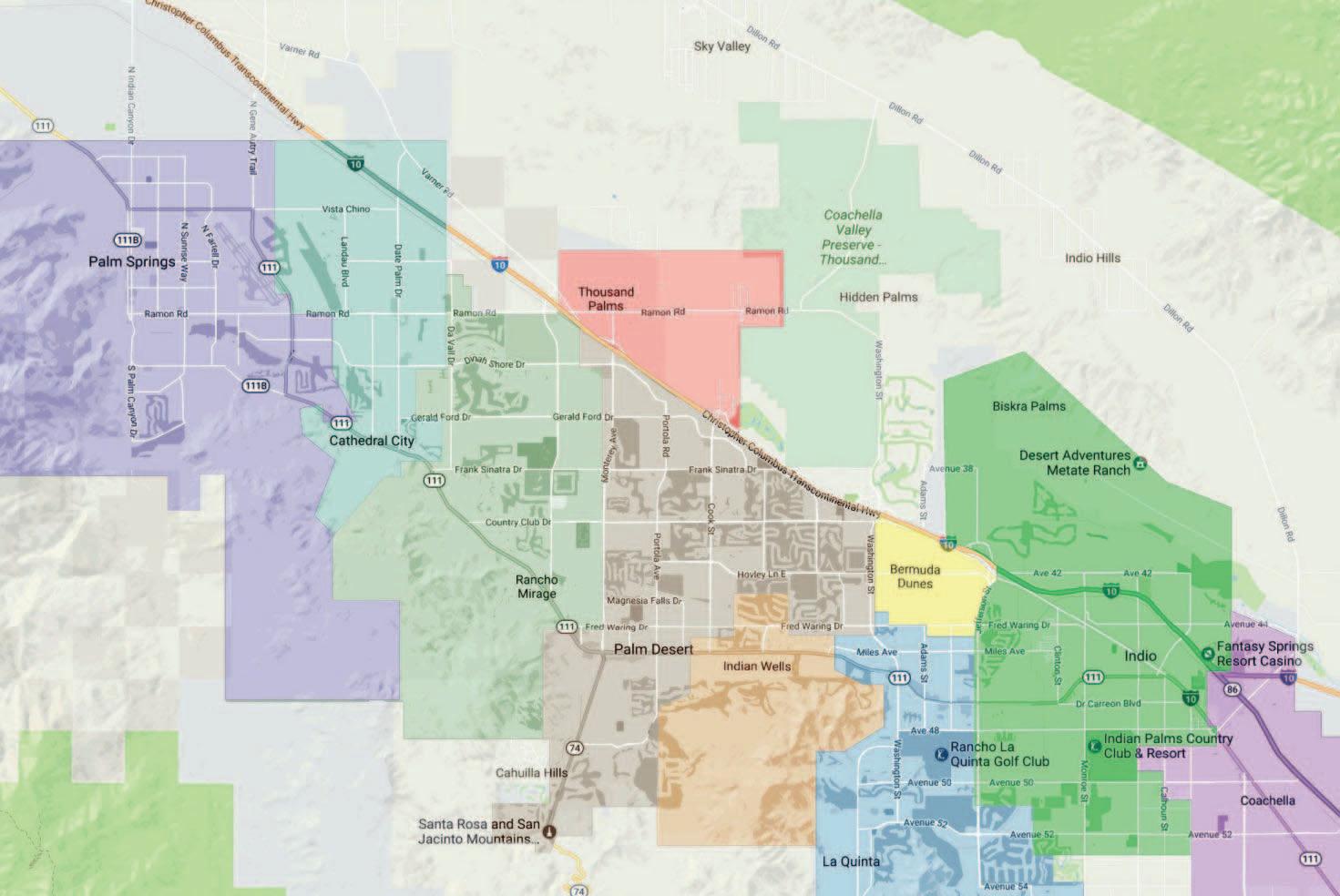



























Turn your home into a gingerbread house with this 8.4 foot self-inflating arch from Home Accents Holiday. $199.99 at homedepot.com.


This cute reindeer from The Holiday Aisle can greet guests on your porch or in the yard. $55.99 at wayfair.com.


Pottery Barn’s wreath of fresh bay leaf, eucalyptus, and rosemary smells as good as it looks. $59-$109 at potterybarn.com.
Puleo International’s 6-foot inflatable Christmas tree comes withe LED lights. $134.99 at kohls.com.

Ornaments aren’t just for inside trees. Note Card Cafe offers a nine-piece collection for outdoor use that can be staked or hung. $59.95 at amazon.com.
The Holiday Aisle makes several banners for holidays, including this Hanukkah menorah. $78.99 at wayfair.com. USA TODAY NETWORK PHOTOS

If you’re planning a new bed for perennials, groundcovers, shrubs or trees to plant next spring, the path to success starts with a good foundation. It’s easier to improve soil before plants are in place, so the time to do so is now.
Before beginning, remove weeds from the area.
Next, test your soil’s pH. Test kits are reasonably priced and widely available. Plus, most states have university-affiliated agricultural extension offices that offer low-cost testing services to home gardeners.
Each plant species thrives best at a specific pH range. If the reading is outside the target range for a plant, it won’t
be able to avail itself of nutrients, whether from soil or fertilizer. So consider what you’ll be planting next year, learn its pH requirement and amend the soil if necessary.
Agriculture limestone will raise pH, and aluminum sulfate or sulfur will lower it. The package label will provide directions for your soil type and the bed’s square footage.
If you’re fortunate enough to have autumn leaves littering your property, push a thin layer of them into beds and borders. If possible, shred them first with a mulching mower.
Then layer 3 to 4 inches of wellsourced, unsterilized compost over the leaves (or directly on the soil in the absence of leaves) and level it out with a stiff-tined rake. It will feed beneficial
microbes and other soil-dwelling organisms, and release high-quality nutrients into the ground to feed your plants.
Contrary to long-held gardening beliefs, it’s best not to till amendments into the soil. Doing so could damage soil structure, break up valuable fungal threads, kill earthworms and other beneficial insects, and bring weed seeds to the surface.
Remember, the richest soil is found on the forest floor, and nobody’s been digging that up.
So, unless your aim is to correct a drainage issue, emulate nature and place amendments directly on the earth. They’ll work their way down over the next few months.
Apply 2 to 3 inches of mulch over the compost to further suppress weeds and
moderate soil temperature and moisture over the winter.
If plants are already growing in the bed, postpone adding mulch until after a hard frost, and keep both compost and mulch a few inches from stems and trunks to prevent rot.
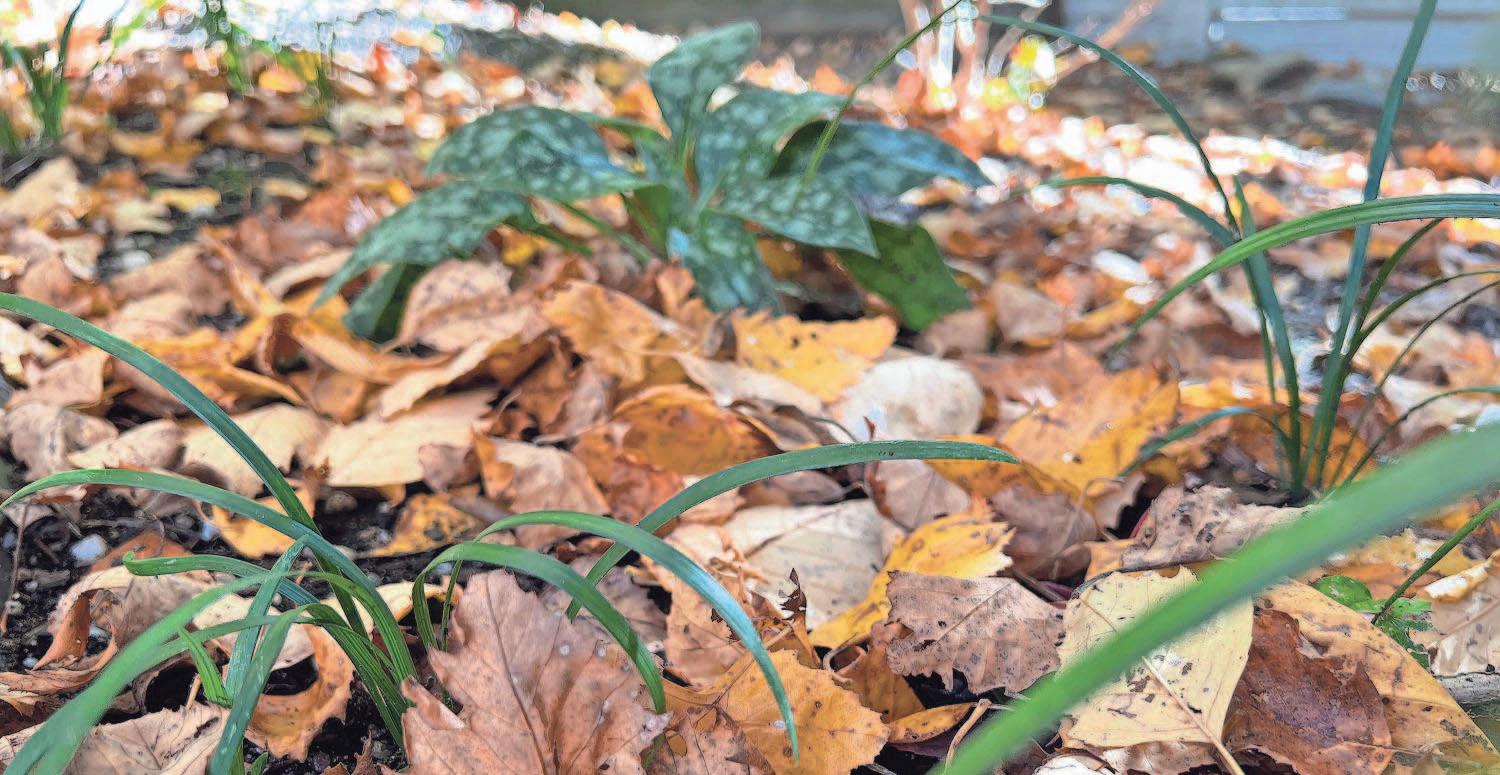
By spring, the benefits of the amendments will be available at root level, and the soil will have softened for easier planting. Push the mulch away and install your plants.
Your new garden will thrive in the rich, organic environment you’ve created, and reward you with vigorous growth, beautiful flowers and productive vegetables.
And they’ll be sturdier, healthier and better able to withstand pests and diseases.
Fall has arrived and with it come the vibrant colors of Japanese maples. The brilliant yellows, fire engine reds, electric oranges, deep maroons, and vibrant apricots set the landscape aglow. Each day the leaves become more and more dramatic as the progression of colors develop. Japanese maples are known for their vivid hues in the fall. They are also known for the interesting tree structure during the winter, the pretty pink and soft tones as the leaves unfurl in the spring, and their interesting shaped foliage during the summer. They are certainly a tree for all seasons.
Japanese maples are also known for their countless variations in size, the many different shapes, interesting variation in leaves, and eye-catching texture. They are divided into groups according to leaf shape. The two shapes are palm-shaped and delicate lace-leaf which are often called cut leaf or thread-leaf. However, in recent years, they are also being grouped into different categories including habit, dwarf size, leaf color, lace-leaf, variegated, and weeping.
After years and years of collecting and breeding, there are at least a thousand different varieties of Japanese maples. Some can be quite similar to one another, but there are others that are quite unique and possess special forms of outstanding beauty. I was told by Tim Nichols, a maple specialist and owner of Mr. Maple Nursery with his brother Matt, that there is a Japanese maple that will fit almost any situation, shade, sun, heat, cold, humidity, and on and on.
These trees are easy to grow. In some areas of the country, they grow much quicker than in other areas but they will grow if you choose the right cultivar for the climate and put them in a good location. As Tim says, there is a Japanese maple for almost any situation; it is a matter of choosing the right one for the particular location.
Japanese maples are shallow rooted and can be incorporated with other plants provided proper nutrition is supplied in the early spring before the trees leaf out. One thing, Japanese maples never grow as large as their counterparts the sugar maples and other species of maples that grow to be quite large. These are relatively small trees. If pruned regularly, their size can be controlled. Some varieties are dwarf while other can grow to as tall as 30 feet. Some tend to grow wider than taller, but I also have some that are quite narrow. Some of this has to do with location. If they are in places where they have trees around them, they will tend to grow upward instead of outward.
It is best to position Japanese maples in filtered sunlight to part shade. They will take full shade in warmer zones. Afternoon sun is rarely tolerated by any of them. They like moist, well-drained soil. Sandy and loamy soil work well, but avoid soil that is high in alkalinity since they prefer slightly acidic soil. Now, even though they like well-drained soil, they do benefit
from regular watering, especially when you first plant them. Once they are well established, I rarely give them extra water but if it is unusually dry, I do give them a drink of water.
Japanese maples like a little 10-10-10 in the spring when they are putting out new growth. This seems to work better than a high nitrogen fertilizer. It is best to fertilize between March and June. If you fertilize after that, the fall color might not be as dramatic because the new growth that has just come out does not shut down as quickly.
You do not have to prune these prized trees. If you want to shape them or thin the inter branches, it is best to do this in late February. This can also vary depending what heat zone you are located in. Warmer areas can prune a little earlier and colder areas can prune later. It takes 28 days to recover from pruning and pruning in February will give the tree time to recover before the new growth emerges. If you prune later in the summer, it will also take the tree longer to recuperate from trimming.
We had a tornado come through our property a few years ago and after cleaning up all the large oaks we lost, I decided to make one area a showplace for fall
color by moving some Japanese maples I had planted years before. When I planted these trees, they were very small. Most of them I had planted too close together. There was one area where I had planted seven Japanese of the same variety because I wanted to make a nice show. There were others that were just in the wrong place to show them off. I am telling you this because we found them easy to move. We moved some quite large Japanese maples and we did not lose a single tree. I would have been devastated if I had lost a single one, especially since I have watched them go from a very small tree to a nice size specimen. So, if you are ever needing to move one for any reason, they do move easily/ Be sure to give it extra water through the first two summers.
Now, if you do not have a Japanese maple, think about putting one on your list to purchase. They really are a tree for all seasons, with each season showing off the tree in a different way.
Betty Montgomery is a master gardener and author of “Hydrangeas: How To Grow, Cultivate & Enjoy,” and “A Four-Season Southern Garden.” She can be reached at bmontgomery40@gmail.com.

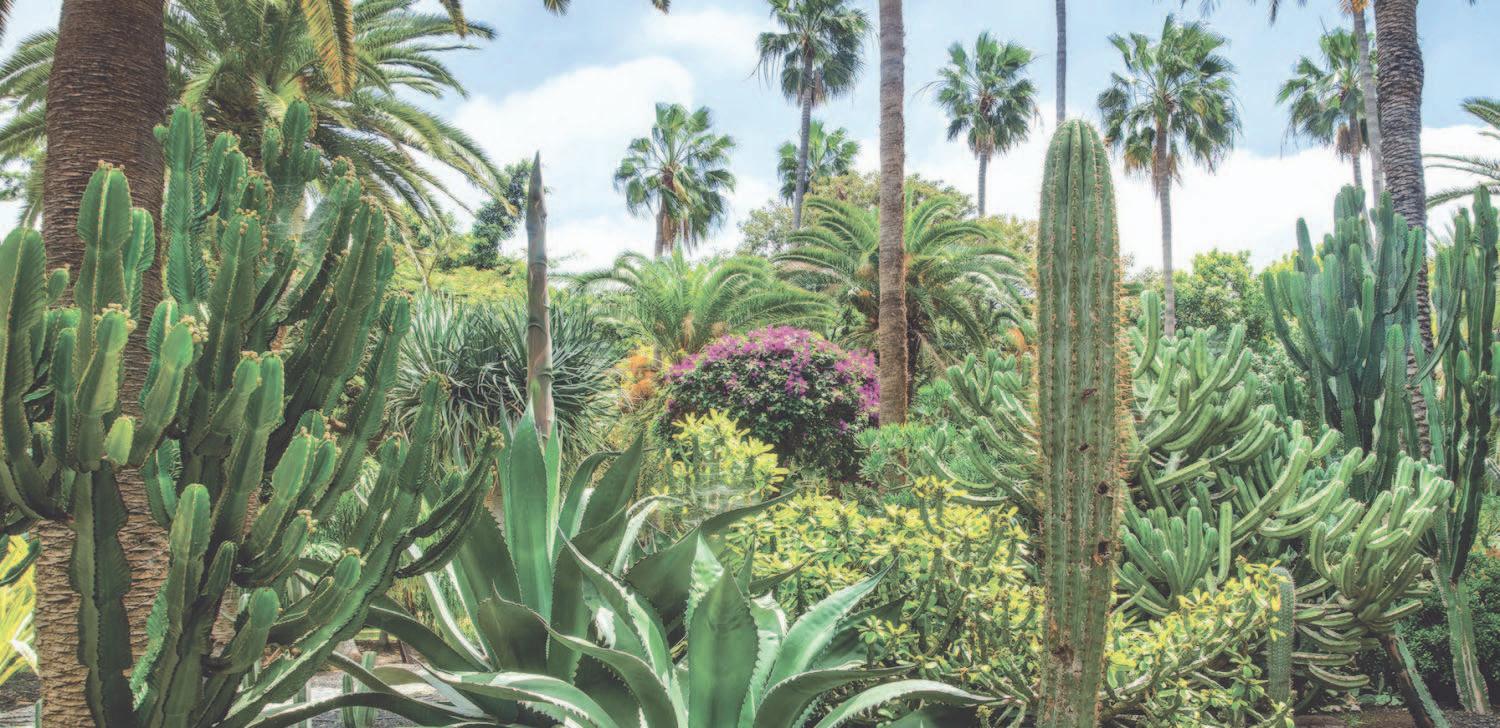



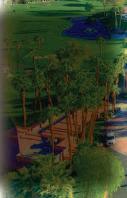


Pumpkins are a beloved symbol of autumn. Here are some fun pumpkin facts and ideas of what you can do with your “pepon” after the festivities end.

h The word “pumpkin” originates from “pepon,” which means “large melon” in Greek. It then evolved to “pompon” in French and “pumpion” in Britain. The Americans later changed it to “pumpkin,” the name we still use today.

h Every year, the US produces 1.5 billion pounds of pumpkin. 80 percent of this crop (around 800 million pumpkins) are ripe for picking in one single month of the year — October.
h Pumpkins are grown in most counties in California. The majority of commercial production takes place in San Joaquin County.


h In 2021, 2,250 acres of pumpkins were harvested in San Joaquin County (54,500 tons)
h Technically a fruit, the pumpkin is
a winter squash in the family Cucurbitaceae which includes cucumbers and melons.
h Every single part of a pumpkin is edible: the skin, leaves, flowers, pulp, seeds, and stems.
h Pumpkins are 92% water.
h Carving jack-o’-lanterns was brought to America by Irish immigrants. In their homeland, the Irish used to carve jack-o’-lanterns out of potatoes or turnips, but upon arrival in America,
they began to use pumpkins instead because they were far easier to carve. The tradition of the “jack-o’-lantern” stems from an Irish legend about a man named Stingy Jack who was a somewhat unpleasant character famous for playing tricks on people.
h Pumpkins take up a lot of space in our landfills. Of the 1.4 billion pounds produced in the US, about 900,000 tons end up in the landfill according to the World Economic Forum.
Add them to a compost pile: Pumpkins decompose quickly. Even if you do not have acompost pile, you can find a hidden spot for them in the yard to let them decompose. You should remove the seeds unless you want pumpkins growing next year. Chopping up the pumpkins will speed up decomposition.
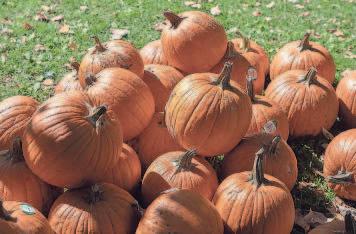
Holiday decorations: Uncarved pumpkins can be used as a centerpiece for Thanksgiving or a planter filled with fall flowers for your porch. A coat of
spray paint and some ribbon or other decorations turns them into Christmas ornaments, snowmen, and other fun holiday items.
Feed wildlife: Some local farms will take pumpkin donations to feed their animals. If you know someone with backyard chickens, they might take a few as a treat for their flock. You can feed the wildlife in your own backyard too. Split open the pumpkins so the flesh is exposed, and place them around your yard. Cut off the top half of the carved pumpkin and turn it into a bird feeder. Many birds and other small animals will also eat the pumpkin seeds. Don’t add seasoning or salt if you are saving them for wildlife and make sure they have not been treated with bleach which can be harmful to wildlife.
Eat them: A common fall tradition is roasting pumpkin seeds. Common Carving pumpkins have been bred for size and color rather than for flavor but they are just as edible — although slightly less flavorful — than other varieties, such as sugar or pie pumpkins.






















